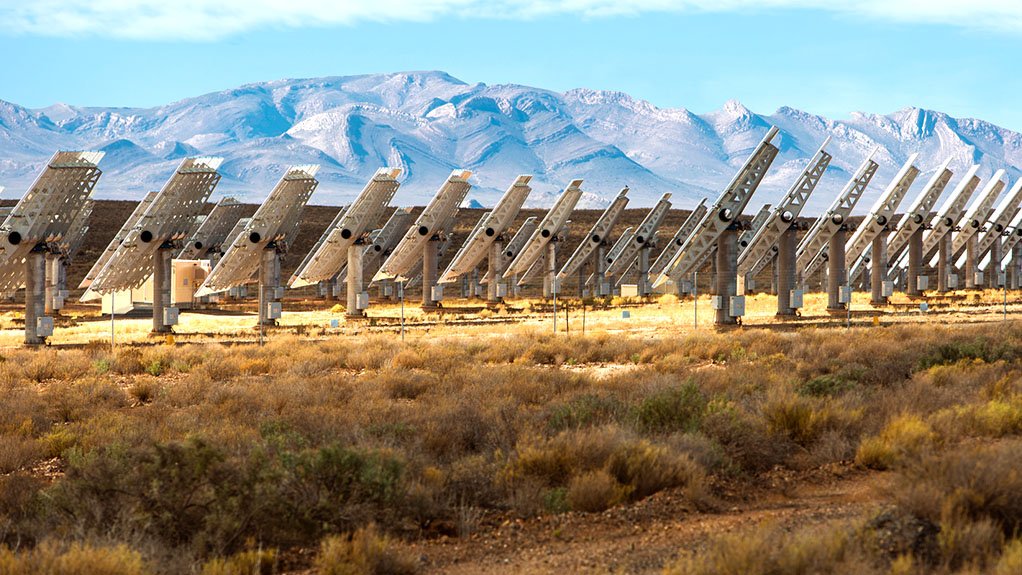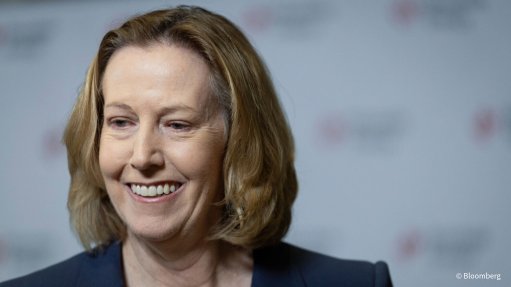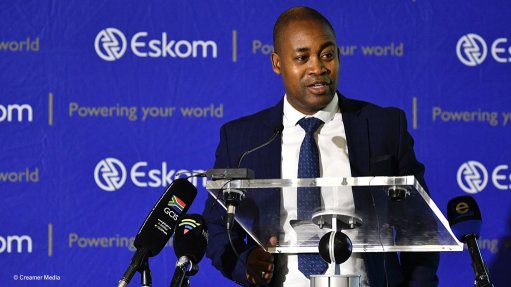100 MW-plus projects registration expected by Q3


BETTING ON SOLAR There remains untapped potential for much wider deployment of solar photovoltaic in South Africa, but its contribution to the local electricity mix is growing at a rapid rate
The South African Photovoltaic Industry Association (SAPVIA) expects private-sector projects exceeding the 100 MW threshold to be reflected on the National Energy Regulator of South Africa’s (Nersa’s) database from the second or third quarters of this year to further increase new generation capacity, says SAPVIA CEO Dr Rethabile Melamu.
An estimated 4.3 GW of solar photovoltaic (PV) capacity was installed as of 2021 across various market segments, with the total capacity of non-Renewable Energy Independent Power Producer Procurement Programme (REIPPPP) solar PV initiatives registered with Nersa increasing by 1.2 GW since the last quarter of 2021 over the past year.
In addition, the number of projects registered with Nersa increased by 33% and the total registered capacity increased by 572 MW in the third quarter of last year, compared with the previous comparable period.
While there remains untapped potential for much wider deployment of solar PV in South Africa, its contribution to the local electricity mix is growing at a rapid rate, she states.
“This growth has been catalysed by recent regulatory reforms that led to the removal of the licencing threshold for embedded generation projects, mostly championed by members of SAPVIA that are keen to address loadshedding challenges and the current generation shortfall,” explains Melamu, adding that the embedded generation sector is growing as fast as the infrastructure and current regulations allow.
An estimated 5 GW to 9 GW of private-sector projects are planned by 2030.
This would lead to loadshedding being significantly reduced on the low end and eliminated on the high end, advances Melamu.
“South Africa is blessed with abundant solar resources in most of our major population centres and industrial areas present a strong financial case for embedded generation projects.”
Therefore, solar PV will continue to address energy supply constraints in the residential, commercial and industrial spaces, with new business models for the increased uptake of residential systems expected to deliver growth, concludes Melamu.
Meanwhile, the two Bid Window 5 projects procured under the REIPPPP that reached financial close in 2022 are expected to start construction and come on line this year.
The REIPPPP has seen some improvement in implementing the designated capacities set out in the Integrated Resources Plan 2019; however, SAPVIA believes that more solar PV should be allocated to fully exploit the opportunities and address the country’s crippling energy crisis.
“The industry hopes that an additional 1 000 MW of solar PV capacity, as was initially announced by President Cyril Ramaphosa under Bid Window 6, will be prioritised this year. Better coordination among the various institutions, such as the Independent Power Producers Office, State-owned power utility Eskom and Nersa, could speed up the process,” states Melamu.
Several interventions need to be prioritised concurrently to address South Africa’s energy crisis, but the country will likely deal with loadshedding in the foreseeable future, avers Melamu.
In the short term, Eskom must drastically improve the energy availability factor of its existing generation fleet to bridge the country’s electricity supply deficit of between 4 000 MW and 8 000 MW, she adds.
Article Enquiry
Email Article
Save Article
Feedback
To advertise email advertising@creamermedia.co.za or click here
Comments
Press Office
Announcements
What's On
Subscribe to improve your user experience...
Option 1 (equivalent of R125 a month):
Receive a weekly copy of Creamer Media's Engineering News & Mining Weekly magazine
(print copy for those in South Africa and e-magazine for those outside of South Africa)
Receive daily email newsletters
Access to full search results
Access archive of magazine back copies
Access to Projects in Progress
Access to ONE Research Report of your choice in PDF format
Option 2 (equivalent of R375 a month):
All benefits from Option 1
PLUS
Access to Creamer Media's Research Channel Africa for ALL Research Reports, in PDF format, on various industrial and mining sectors
including Electricity; Water; Energy Transition; Hydrogen; Roads, Rail and Ports; Coal; Gold; Platinum; Battery Metals; etc.
Already a subscriber?
Forgotten your password?
Receive weekly copy of Creamer Media's Engineering News & Mining Weekly magazine (print copy for those in South Africa and e-magazine for those outside of South Africa)
➕
Recieve daily email newsletters
➕
Access to full search results
➕
Access archive of magazine back copies
➕
Access to Projects in Progress
➕
Access to ONE Research Report of your choice in PDF format
RESEARCH CHANNEL AFRICA
R4500 (equivalent of R375 a month)
SUBSCRIBEAll benefits from Option 1
➕
Access to Creamer Media's Research Channel Africa for ALL Research Reports on various industrial and mining sectors, in PDF format, including on:
Electricity
➕
Water
➕
Energy Transition
➕
Hydrogen
➕
Roads, Rail and Ports
➕
Coal
➕
Gold
➕
Platinum
➕
Battery Metals
➕
etc.
Receive all benefits from Option 1 or Option 2 delivered to numerous people at your company
➕
Multiple User names and Passwords for simultaneous log-ins
➕
Intranet integration access to all in your organisation

















